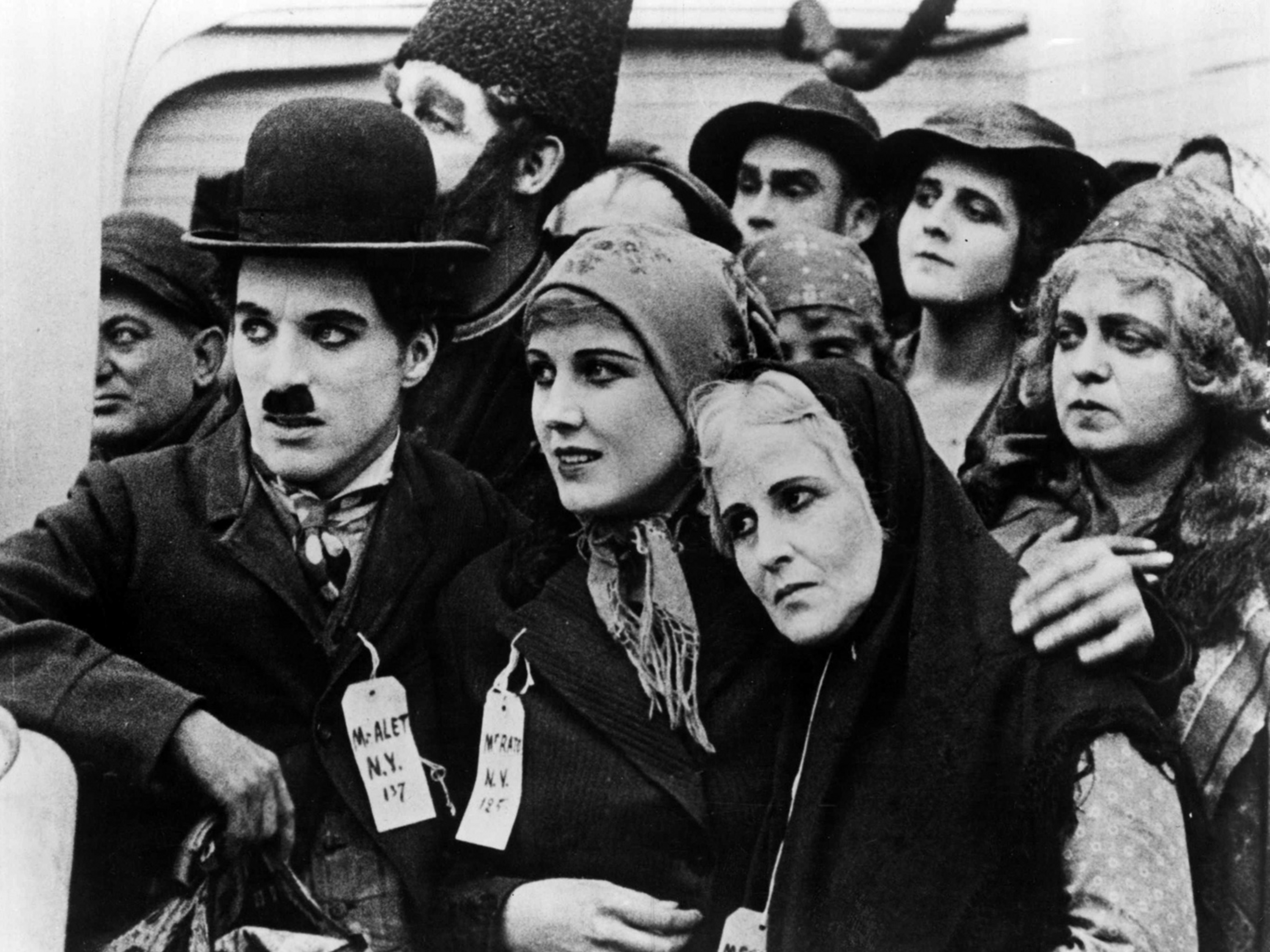Maybe a tragedy, maybe a comedy… All in all, The Immigrant is still considered as one of the greatest masterpieces of cinema and one of Charlie Chaplin’s most successful films.
With his debut in the world of cinema in 1916, Charlie Chaplin was already gaining considerable fame. A fame that would continue when the Keystone Film Company made him an offer in 1918. The Company requested Chaplin to make 12 films with the Mutual Film Corporation with a very large contract.
Chaplin accepted the offer, but made only 4 films under the contract for the reasons that he wanted a careful construction and enough budget for each film. The films were Easy Street, The Cure, The Immigrant and The Adventurer. Nowadays these movies are considered as Chaplin’s finest works by his scholars. It’s also worth noting that Chaplin felt very happy when he was making the movies. Even later in life, he referred to his Mutual years as the happiest period of his career.
Coming back to our focus, what made The Immigrant so special and important? Perhaps it is the traumas hidden in the comedy and the fact that it touches on a reality of our social life that makes the movie so worthwhile. Or perhaps the fact that the film is based on Chaplin’s own life (he came to America as a refugee) is what draws us to it. We will try to clarify this a bit more in the essay by analyzing the plot and imagery.
At first glance, The Immigrant is just like any other Chaplin film. It contains the carnival and the parade of motifs that we’re accustomed to in Chaplin films. But of course there are certain elements that stand out: a pair of immigrants who will become lovers (played by Charlie Chaplin and Edna Purviance), fellow passengers, waiters and of course shouldn’t forget about the very large plate of beans.
Our pair tries to go to New York with a ship. Ship, pair, New York. We can already speak of the fear of discovering a new world. A new world where you face discrimination because you’re an immigrant. Chaplin seems to attempt to find humor in otherwise traumatic aspects of coming to a new land. A movement of immigration, perhaps a typical immigration or perhaps one of those that touched / will touch our lives at some point.
As the part of the film on the ship progresses, we encounter new elements. For example Chaplin used a special tripod that allowed to feel the thee rocking effect of the boat. Or in order to add some humour he created a scene that he was pretending to vomit but in fact he was fishing etc etc.
When the ship finally reaches New York, we encounter the most remarkable and discussed scene of the movie: an iconic cut between the Statue of Liberty and the passengers that are being “herded like cattle” behind of a rope. Perhaps it is a representation of social exclusion and the freedom that will never be reached out as an immigrant in USA.
This scene would be much debated afterwards and would provoke a backlash from American citizens. In the 1950s, it was presented as evidence that Chaplin was anti-American.
In fact it isn’t the first film to bring up the immigration topic and it’s problematic sides in USA. But surely it’s one of the first examples which is this permanent. Chaplin’s blending of physical comedy with real social issues is what creates this permanence. This can be seen as the reason why the movie drew even more attention and caused a massive backlash.
Leaving the contradictory themes behind, we encounter the second part of the movie: The café section. Chaplin started out from his own experience. He was an outsider and he had some monetary problems so he had to be careful with his money. During that period of his life he was surely intimidated by waiters and he realized that others shared the same feelings too. This section contains some humorous elements as well such as the bean and coffee.
Based on all this, we can say that the movie still retains its value today. In terms of that immigration is still a part of recent generational memory for most Americans. And sharing that immigrant experience was, still is an important part of American history.
Also in terms of that there’re still wars in our current world. This situation creates more refugees who live the same experiences on boards as in the film. We can say that it’s an universal aspect of our topic. Wars in Ukraine, Syria, Afghanistan and Palestine can set a concrete example to this.
As someone living in Turkey, we are one of the first countries where all these refugees seek asylum.This allows us as young people to observe their situation even better. All these observations certainly lead us to a particular understanding and empathy which makes the film even more valuable for the countries of Eurasia and the Middle East.
In conclusion I can say that the fact that the movie tells the troubles of it’s time in an impressive way by mixing it with comedy can set an example for today. And give us a common sense of immigration from an important director’s point of view.
BIBLIOGRAPHY
urlsa=t&source=web&rct=j&opi=89978449&url=https://moviessilently.com/2015/01/04/the-immigrant-1917-a-silent-film-review/&ved=2ahUKEwiF4L3i5PeLAxWRSvEDHcwQHaQQFnoECBoQAQ&usg=AOvVaw2ePv8hAzJFe6mi8T32Fwlo
HA Grace- Charlie Chaplin’s Films and American Culture Patterns (1952)


